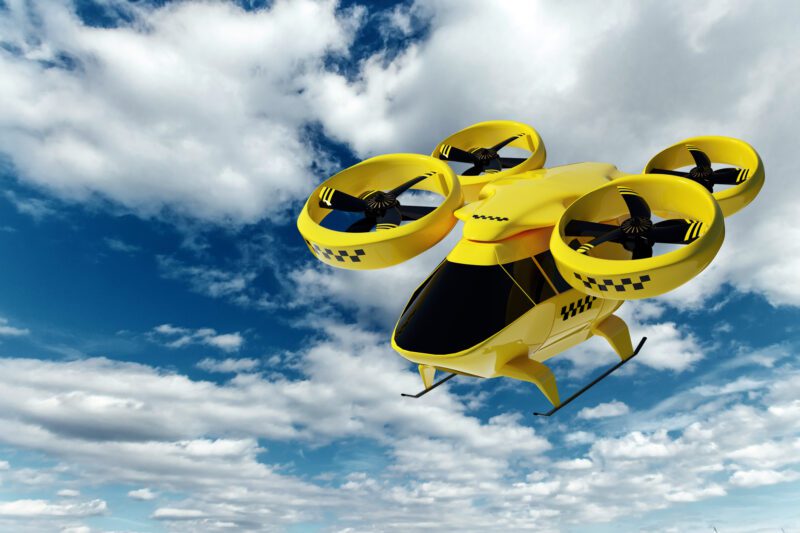Science-fiction movies often portray flying vehicles as the future – but flying taxis could be here much sooner than anyone could imagine.
The Government’s Future of Flight action plan says flying taxis and emergency service drones will be “routine” by 2028 – seven years before the ban on the sale of new petrol and diesel vehicles in the UK and years before every car on the road is an EV.
Working with industry, the Department for Transport estimates drone technology could also boost the UK economy by £45 billion “by the end of the decade”.
The plan aims to have the first piloted flying taxi flight by 2026 and regular services by 2028. It also expects regular drone deliveries by 2027 and trials of “autonomous flying taxis without pilots on board by 2030”.
Reality or fiction
While in a few years there could be pilotless aircraft taking passengers short distances between destinations, it doesn’t mean that in 2028 this is how people will get to the pub, the shops, or a concert.
The Government wants to change the way people and goods are transported – hopefully reducing congestion and pollution – and the action plan gives industries the guidance to push ahead and develop new technologies.
While it might only be a few years before we see small items and packages being delivered to doorsteps by drones, transporting people is a much more complex issue.
Former Aviation and Technology Minister Anthony Browne said: “Cutting-edge battery technology will revolutionise transport as we know it – this plan will make sure we have the infrastructure and regulation in place to make it a reality.
“From flying taxis to emergency service drones, we’re making sure the UK is at the forefront of this dramatic shift in transportation – improving people’s lives and boosting the economy.”
Development
Flying taxis made by Vertical Aerospace in Bristol are already undergoing the Civil Aviation Authority (CAA) authorisation process. Huge advances in battery technology mean they can stay in the air longer and are powerful enough to cover the distances needed.
As well as developing vehicle technology, the Government wants to improve infrastructure to make drone and autonomous aircraft travel routine.
It wants to regenerate smaller aerodromes so they can operate as vertiports for vertical take-off and landing electric aircraft.
It is also vital to develop standards to improve security for drones to boost public safety, something that is addressed in the action plan.
And, as well as offering a newer and more environmentally friendly mode of transport, it is hoped drones and automated aircraft can be used to help improve other areas of daily life.
This includes “finding and repairing faults quicker on our railways with fewer delays and cancellations for train passengers, providing new connections across the UK and using technology to help our emergency services”.
Revolution
Duncan Walker, chief executive of Skyports and Chairman of the Future of Flight Industry Group, said: “By supporting research and development in electric aircraft and drones, and with the help of key partners like the CAA, the action plan aims to usher in a new era of eco-friendly aviation and boost the economy with new investments, ensuring the UK captures the full potential of this emerging global industry as a force for good and a driver of growth.”
And Sophie O’Sullivan, head of future safety and innovation at the UK Civil Aviation Authority, said: “Aviation stands on the cusp of its next, potentially biggest, revolution since the invention of the jet engine. Drones, eVTOL and other different vehicles have the potential to change transportation options forever.”
The action plan is a major step to allowing the technology to develop, but the future is not to remove traffic from our roads and shift it to the skies. We won’t see autonomous flying vehicles on driveways, ready to take people to the supermarket or on the school run.
Taxis and taxi drivers will continue to play a vital role in the communities they serve for years to come.


